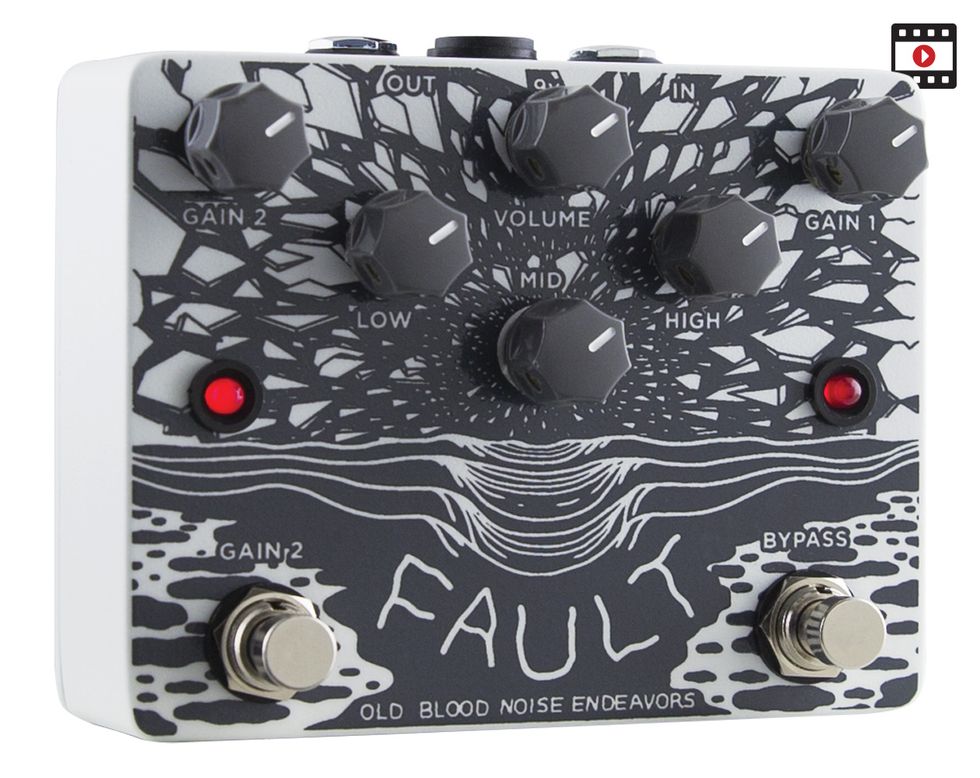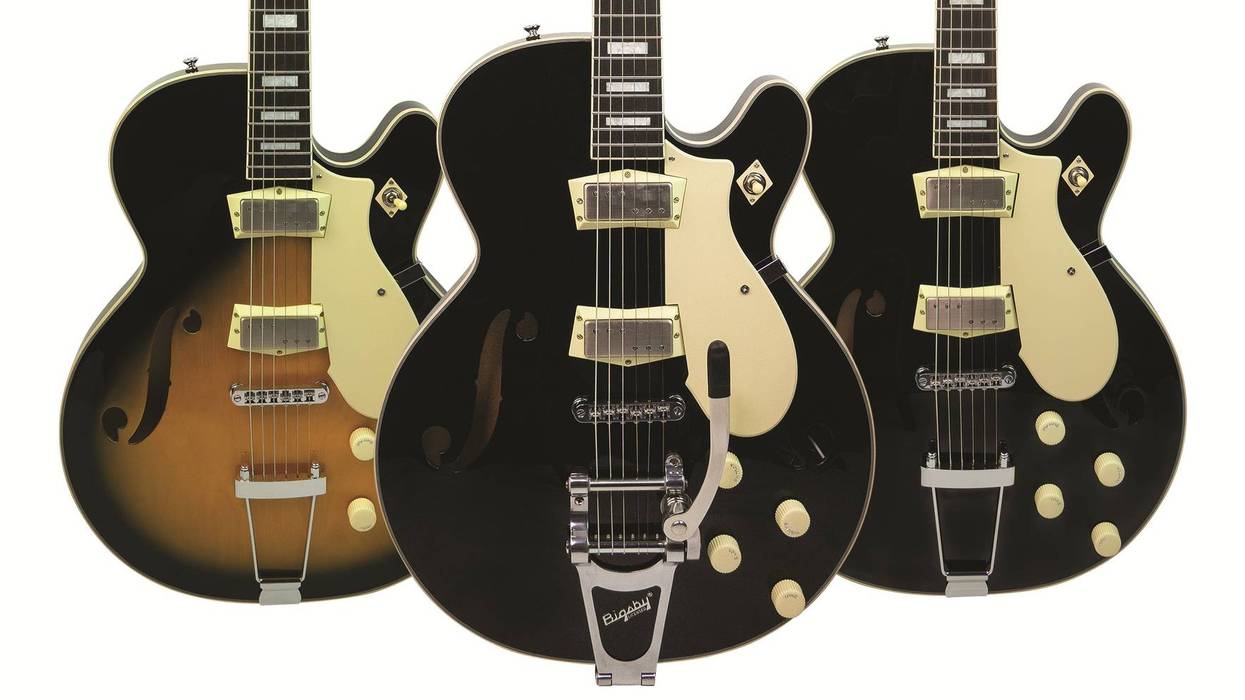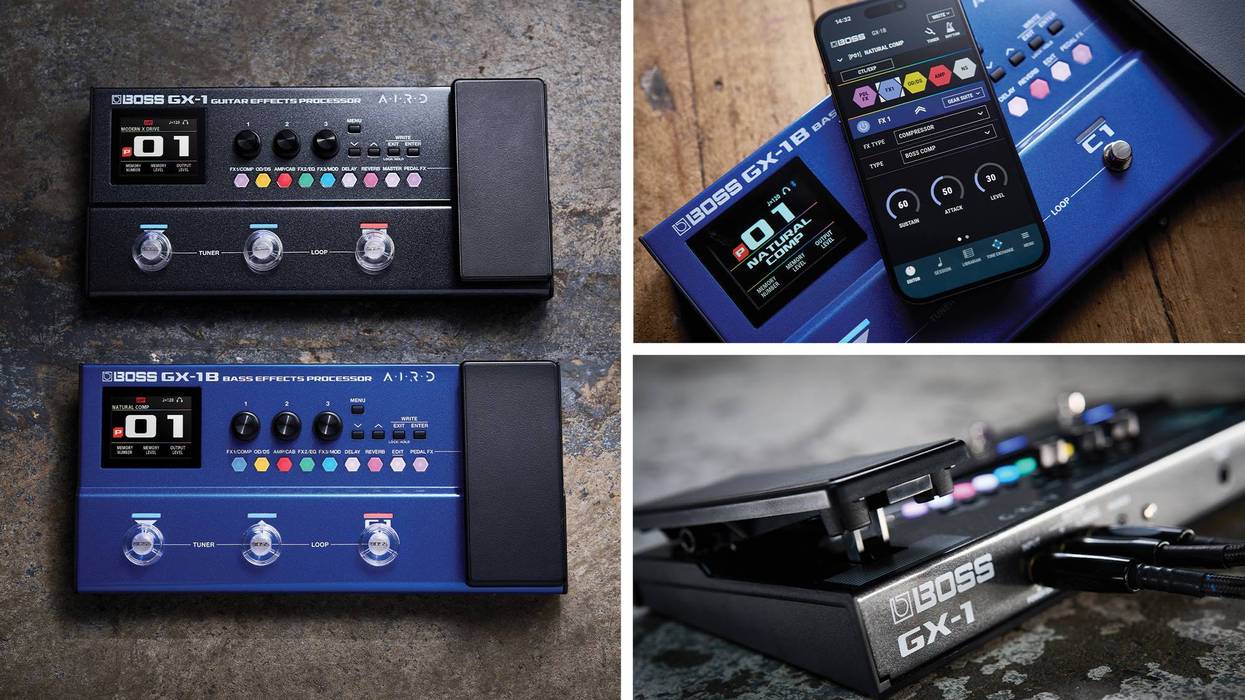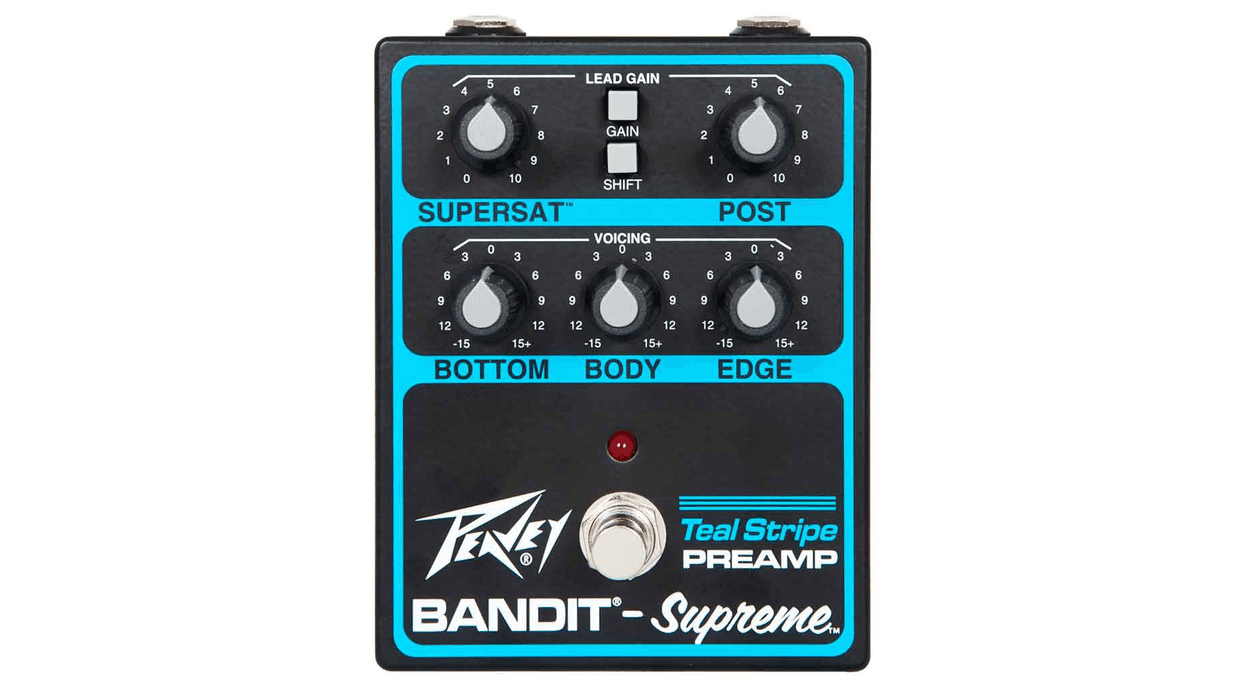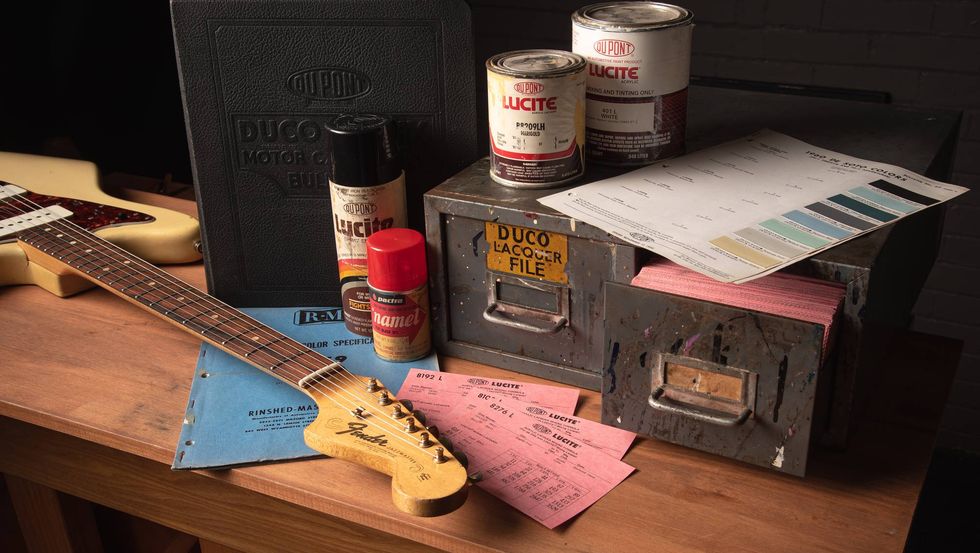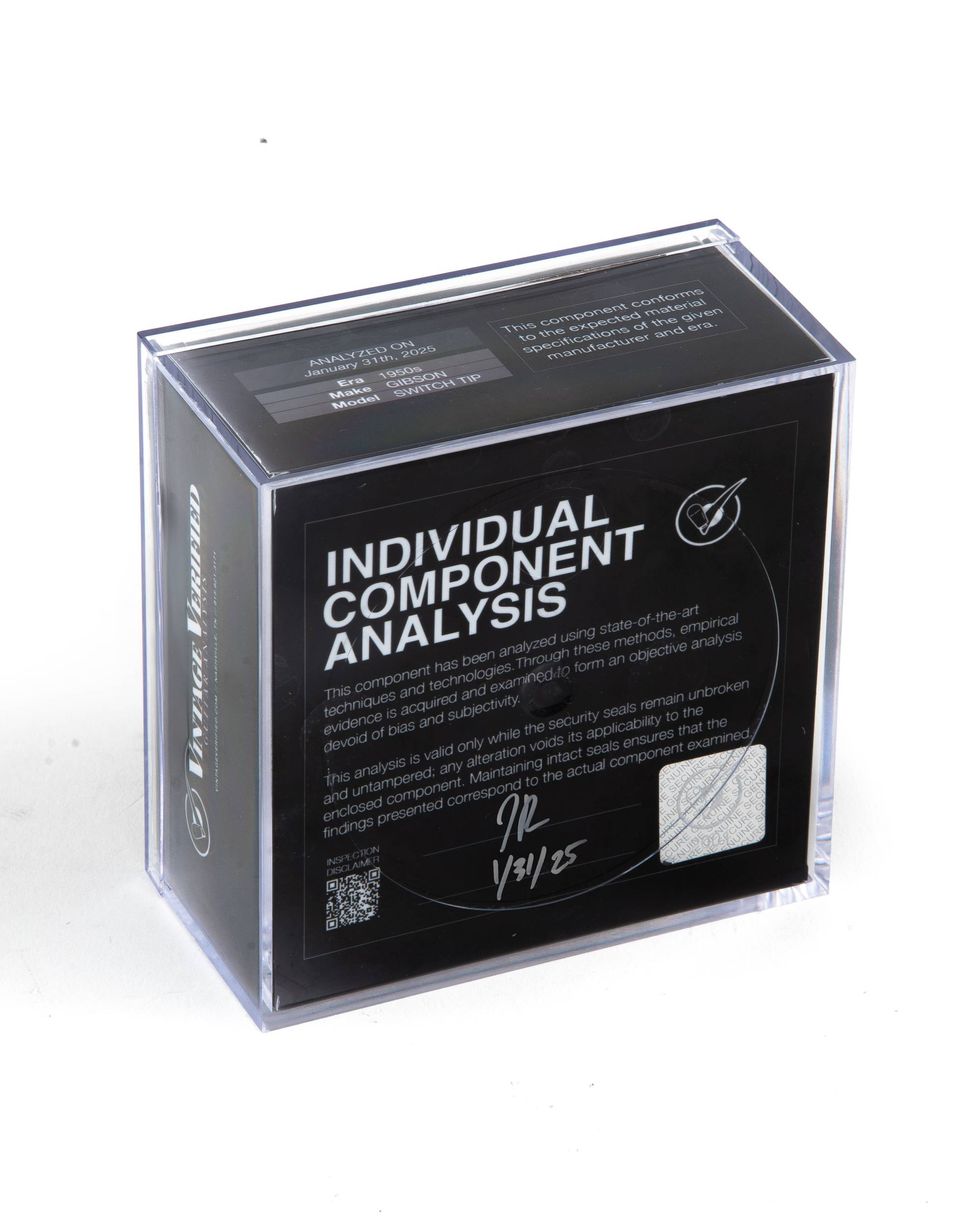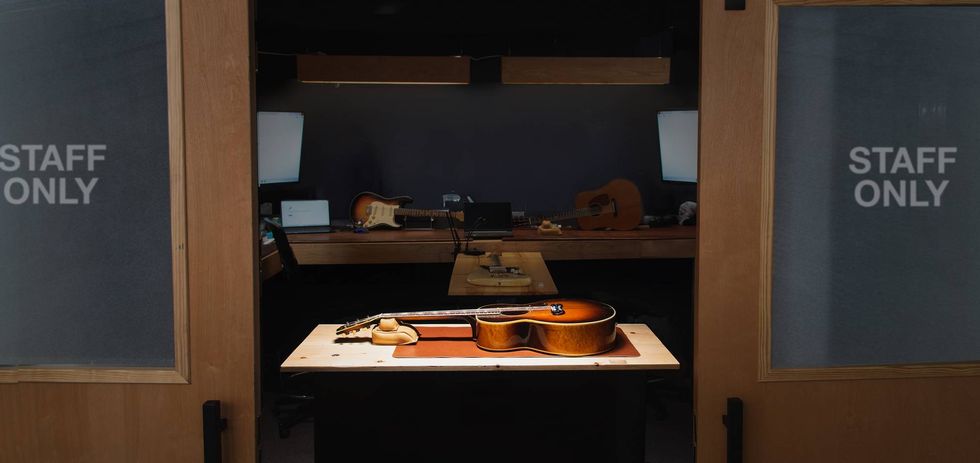Not long ago, I started to see a box called the Black Fountain Delay on the pedalboards of ambient and atmospherically oriented guitar players. I was impressed with its deep, warbling oil-can-style delay textures, and when I discovered the pedal was made by Old Blood Noise Endeavors, I half-expected the company to be dedicated to oddball delays, reverbs, and modulations. That turned out to be partly true: OBNE’s modest but substantial catalog to that point consisted of two delays, two reverbs, a chorus, and a fuzz. However, the release of the Fault overdrive/distortion demonstrates that OBNE also has a knack for the simple stuff—nice natural amp breakup from a two-channel cascading gain circuit.
honking overdriven tones.
Measuring the Fault Line
Operating the dual overdrive/distortion layout is straightforward and simple thanks to several shared controls. The 3-band EQ uses a useful cut/boost configuration, employing a 100 Hz shelf filter on the low end, a 500 Hz bell curve in the mids, and a 3 kHz shelf filter for the high end. A single volume knob controls the master output. The gain 1 knob adjusts the first stage of gain, which ranges from mild breakup to low- to mid-gain distortion. The gain 2 knob has a higher gain range and is activated by pressing the gain 2 bypass. As we’ll see, the Fault’s wide range of drive tones make its wider footprint worth it. No dice if you’re interested in a 9V battery option, though. The Fault only works via the crown-mounted 9V jack.
Ratings
Pros:Authentic breakup tone. Cool, compact design.
Cons:
The shared EQ for both gain stages may not work for everyone. No battery input.
Tones:
Ease of Use:
Build/Design:
Value:
Street:
$199
Old Blood Noise Endeavors Fault
oldbloodnoise.com
Breaking Ground
I explored the pedal’s potential with small amps, starting with a 5-watt Fender Champ 600 and a late-model Epiphone Casino with stock P-90s. Engaging the Fault with gain 1 completely counterclockwise yielded a discernible but very light crunch. It was dynamic though. Gentle fingerpicking generated nearly clean tones, while picking with gusto at the same settings generated classic grinding, honking overdriven tones. Scanning the gain 1’s arc of range clockwise adds progressively more body to the output, and by the time you reach 9 o’clock the output generates killer dirty blues-rock tones. The pedal feels very touch sensitive here, and it’s a great setting for moving from clean to dirty via picking intensity. Pushing further into the gain 1’s range delivers a very pleasant breakup—natural and very much akin to what the 5-watt amp actually sounds like when it’s really throttled, but without the speaker distortion. This set up is really great for coaxing big tones out of little amps without arousing the authorities.
I was a bit hesitant about hitting the Champ with the second gain stage, but I could get great tones at lower amp volume and surprisingly heavy gain 2 settings. At around 2 o’clock—and with a little extra low-end boost—sweet Clapton/Cream tones were well within reach. Better still, the Fault remained sensitive to dynamics, and rolling back my Les Paul’s volume yielded very nice sounding low-gain tones, while more fiery sounds remained just a touch away.
My tests on an Orange OR50 and 4x12 cabinet found the Fault even more at home, and I could crank up the volume of the amp without worrying about speaker decay. One aspect of the Fault’s cascading gain configuration that’s easy to hear coming from a big amp is a distinct volume jump when you engage gain 2. I actually really like this feature of the cascading gain, as it allows you to setup gain 1 as more of a baseline output and generate a much hotter, boosted lead tone when clicking into the 2nd stage. You can set up both channels for more-or-less-equal output, but you do sacrifice some of the cool quasi-fuzz distortion tones that lie in wait at higher gain 2 levels.
The Verdict
As far as dual-footswitch OD/distortions go, the OBNE Fault is an exceptional sounding one —readily able to move from mild crunch to full-blown breakup bliss. There’s no tone smothering going on. What you pick and how you play will shine through the Fault (warts and all, I might add), delivering natural feeling output that’s truly characteristic of an amplifier pushed to its limits. It’s great for small or large amplifiers and clean or dirty ones, and it is at home with single-coils or humbuckers. Fault is a true equal-opportunity rock ’n’ roll machine.
Watch the Review Demo:


